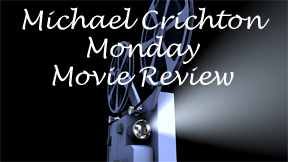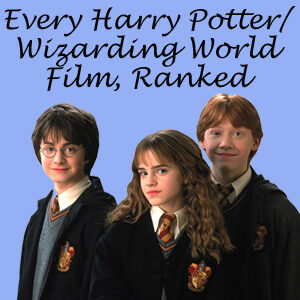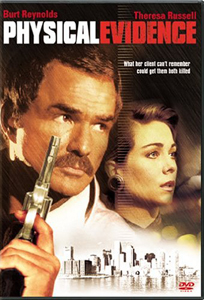One of Michael Crichton’s best traits is an understated one: He captured the time in which his stories were told. In sci-fi, he generally set his stories “tomorrow” so he didn’t have to guess details about the future. The one time he tried a future-set story, in “Runaway” (1984), it led to accidentally hilarity.
1989 in a nutshell
“Physical Evidence” (1989) isn’t a SF story, and it isn’t even written by Crichton, but it’s a gorgeous time-capsule of the late 1980s. It boasts misogynistic antagonists, preppie husbands and corrupt cops.
Ex-cop Joe Paris’ (Burt Reynolds) hardboiled search through Boston scum to find out who framed him for murder could be set in any time. But the fashions favored by lawyer Jenny Hudson (Theresa Russell) – big earrings, suits with pointed shoulders – lock “Evidence” into its era, as do the synth music stylings and starter mansions.

“Physical Evidence” (1989)
Director: Michael Crichton
Writers: Bill Phillips (story, screenplay), Steve Ransohoff (story)
Stars: Burt Reynolds, Theresa Russell, Ned Beatty
All told, “Evidence” has aged well because it hasn’t aged well, and I liked it way more than I was supposed to.
Crichton didn’t need to direct someone else’s writing at this point in his career. (And indeed, this would be his last directing credit, although he did uncredited reshoots on “The 13th Warrior” a decade later). So presumably he liked the screenplay. He wasn’t wrong, even if Bill Phillips doesn’t have a resume that jumps out at you.
Phillips gives client Paris and attorney Hudson some great pseudo-Mametian tossed-off lines, starting with the latter’s advice to “Be nice; your ass is in my hands.”
Russell and Reynolds
Crichton’s growing interest in strong women protagonists perhaps drew him to this project. Jenny continually proves herself to her boss; the opposing councilor (Ned Beatty as Nicks); her preppie boyfriend whom she finally dumps; and her client, who gradually softens for her.
Russell’s smoky-voiced, increasingly confident performance shows women can slot nicely into this noir world of steamy alleys, offed witnesses, and neon-signed clubs with unprinted menus of cocaine and hookers.
Reminding us of why Reynolds was a sex symbol, Joe simply blocks Jenny’s movement through her apartment, and she says getting involved isn’t a good idea. He says he was just handing her some boxes. Sure he was.
The world around him
The actual case was probably the reason to watch “Evidence” in 1989, and it remains a decent portrait of the criminal underground and a cop who wades into the muck. Some of the slime has been tracked into the BPD itself; Paris is hated there because he doesn’t stand for police brutality.
In fact, we’re told that Paris “accidentally” (cough, cough) nudged his partner – known for beating suspects — through a window to his death before this film’s events.

In addition to the glimpse into the precinct, “Evidence” is also a respectable law procedural as rookie Hudson and veteran Nicks chat in the courtroom and its halls.
But watched today, the style rules. Crichton may or may not have realized he was creating a time capsule. His opening montage of the Boston cityscape plays as both a setup to “Evidence” and as a reminder of how old noirs could ground us in a time and place.
As with 1978’s “Coma,” which is SF but not until the final act, “Physical Evidence” makes a case that director Crichton is at his best when he’s working in a well-trod genre. Novels are the playground for his imagination; movies are where he makes art from the world around him.

